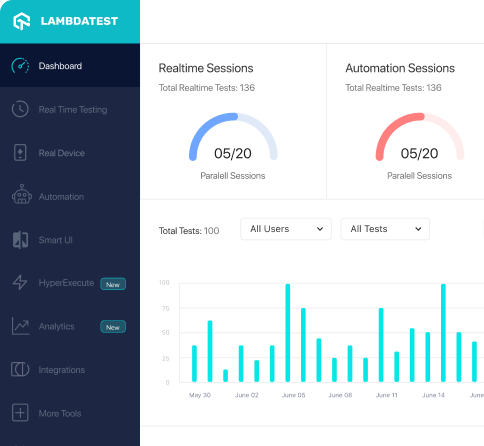How to use ObjectArrayAssert_usingRecursiveFieldByFieldElementComparator_Test class of org.assertj.core.api.objectarray package
Best Assertj code snippet using org.assertj.core.api.objectarray.ObjectArrayAssert_usingRecursiveFieldByFieldElementComparator_Test
...17import org.assertj.core.internal.ObjectArrays;18import org.assertj.core.test.AlwaysEqualComparator;19import org.assertj.core.util.Arrays;20import org.junit.jupiter.api.Test;21public class ObjectArrayAssert_usingRecursiveFieldByFieldElementComparator_Test extends ObjectArrayAssertBaseTest {22 private ObjectArrays arraysBefore;23 @Test24 public void successful_isEqualTo_assertion_using_recursive_field_by_field_element_comparator() {25 ObjectArrayAssert_usingRecursiveFieldByFieldElementComparator_Test.Foo[] array1 = new ObjectArrayAssert_usingRecursiveFieldByFieldElementComparator_Test.Foo[]{ new ObjectArrayAssert_usingRecursiveFieldByFieldElementComparator_Test.Foo("id", new ObjectArrayAssert_usingRecursiveFieldByFieldElementComparator_Test.Bar(1)) };26 ObjectArrayAssert_usingRecursiveFieldByFieldElementComparator_Test.Foo[] array2 = new ObjectArrayAssert_usingRecursiveFieldByFieldElementComparator_Test.Foo[]{ new ObjectArrayAssert_usingRecursiveFieldByFieldElementComparator_Test.Foo("id", new ObjectArrayAssert_usingRecursiveFieldByFieldElementComparator_Test.Bar(1)) };27 Assertions.assertThat(array1).usingRecursiveFieldByFieldElementComparator().isEqualTo(array2);28 }29 @Test30 public void successful_isIn_assertion_using_recursive_field_by_field_element_comparator() {31 ObjectArrayAssert_usingRecursiveFieldByFieldElementComparator_Test.Foo[] array1 = new ObjectArrayAssert_usingRecursiveFieldByFieldElementComparator_Test.Foo[]{ new ObjectArrayAssert_usingRecursiveFieldByFieldElementComparator_Test.Foo("id", new ObjectArrayAssert_usingRecursiveFieldByFieldElementComparator_Test.Bar(1)) };32 ObjectArrayAssert_usingRecursiveFieldByFieldElementComparator_Test.Foo[] array2 = new ObjectArrayAssert_usingRecursiveFieldByFieldElementComparator_Test.Foo[]{ new ObjectArrayAssert_usingRecursiveFieldByFieldElementComparator_Test.Foo("id", new ObjectArrayAssert_usingRecursiveFieldByFieldElementComparator_Test.Bar(1)) };33 Assertions.assertThat(array1).usingRecursiveFieldByFieldElementComparator().isIn(new Object[]{ array2 });34 }35 @Test36 public void failed_isEqualTo_assertion_using_recursive_field_by_field_element_comparator() {37 ObjectArrayAssert_usingRecursiveFieldByFieldElementComparator_Test.Foo[] array1 = new ObjectArrayAssert_usingRecursiveFieldByFieldElementComparator_Test.Foo[]{ new ObjectArrayAssert_usingRecursiveFieldByFieldElementComparator_Test.Foo("id", new ObjectArrayAssert_usingRecursiveFieldByFieldElementComparator_Test.Bar(1)) };38 ObjectArrayAssert_usingRecursiveFieldByFieldElementComparator_Test.Foo[] array2 = new ObjectArrayAssert_usingRecursiveFieldByFieldElementComparator_Test.Foo[]{ new ObjectArrayAssert_usingRecursiveFieldByFieldElementComparator_Test.Foo("id", new ObjectArrayAssert_usingRecursiveFieldByFieldElementComparator_Test.Bar(2)) };39 Assertions.assertThatExceptionOfType(AssertionError.class).isThrownBy(() -> assertThat(array1).usingRecursiveFieldByFieldElementComparator().isEqualTo(array2)).withMessage(String.format(("%nExpecting:%n" + (((((((" <[Foo(id=id, bar=Bar(id=1))]>%n" + "to be equal to:%n") + " <[Foo(id=id, bar=Bar(id=2))]>%n") + "when comparing elements using recursive field/property by field/property comparator on all fields/properties%n") + "Comparators used:%n") + "- for elements fields (by type): {Double -> DoubleComparator[precision=1.0E-15], Float -> FloatComparator[precision=1.0E-6]}%n") + "- for elements (by type): {Double -> DoubleComparator[precision=1.0E-15], Float -> FloatComparator[precision=1.0E-6]}%n") + "but was not."))));40 }41 @Test42 public void failed_isIn_assertion_using_recursive_field_by_field_element_comparator() {43 ObjectArrayAssert_usingRecursiveFieldByFieldElementComparator_Test.Foo[] array1 = new ObjectArrayAssert_usingRecursiveFieldByFieldElementComparator_Test.Foo[]{ new ObjectArrayAssert_usingRecursiveFieldByFieldElementComparator_Test.Foo("id", new ObjectArrayAssert_usingRecursiveFieldByFieldElementComparator_Test.Bar(1)) };44 ObjectArrayAssert_usingRecursiveFieldByFieldElementComparator_Test.Foo[] array2 = new ObjectArrayAssert_usingRecursiveFieldByFieldElementComparator_Test.Foo[]{ new ObjectArrayAssert_usingRecursiveFieldByFieldElementComparator_Test.Foo("id", new ObjectArrayAssert_usingRecursiveFieldByFieldElementComparator_Test.Bar(2)) };45 Assertions.assertThatExceptionOfType(AssertionError.class).isThrownBy(() -> assertThat(array1).usingRecursiveFieldByFieldElementComparator().isIn(new Object[]{ array2 })).withMessage(String.format(("%nExpecting:%n" + ((((((" <[Foo(id=id, bar=Bar(id=1))]>%n" + "to be in:%n") + " <[[Foo(id=id, bar=Bar(id=2))]]>%n") + "when comparing elements using recursive field/property by field/property comparator on all fields/properties%n") + "Comparators used:%n") + "- for elements fields (by type): {Double -> DoubleComparator[precision=1.0E-15], Float -> FloatComparator[precision=1.0E-6]}%n") + "- for elements (by type): {Double -> DoubleComparator[precision=1.0E-15], Float -> FloatComparator[precision=1.0E-6]}"))));46 }47 @Test48 public void should_be_able_to_use_a_comparator_for_specified_fields_of_elements_when_using_recursive_field_by_field_element_comparator() {49 ObjectArrayAssert_usingRecursiveFieldByFieldElementComparator_Test.Foo actual = new ObjectArrayAssert_usingRecursiveFieldByFieldElementComparator_Test.Foo("1", new ObjectArrayAssert_usingRecursiveFieldByFieldElementComparator_Test.Bar(1));50 ObjectArrayAssert_usingRecursiveFieldByFieldElementComparator_Test.Foo other = new ObjectArrayAssert_usingRecursiveFieldByFieldElementComparator_Test.Foo("1", new ObjectArrayAssert_usingRecursiveFieldByFieldElementComparator_Test.Bar(2));51 final class AlwaysEqualIntegerComparator implements Comparator<Integer> {52 @Override53 public int compare(Integer o1, Integer o2) {54 return 0;55 }56 }57 Assertions.assertThat(Arrays.array(actual)).usingComparatorForElementFieldsWithNames(new AlwaysEqualIntegerComparator(), "bar.id").usingRecursiveFieldByFieldElementComparator().contains(other);58 }59 @Test60 public void comparators_for_element_field_names_should_have_precedence_over_comparators_for_element_field_types_when_using_recursive_field_by_field_element_comparator() {61 Comparator<String> comparator = ( o1, o2) -> o1.compareTo(o2);62 ObjectArrayAssert_usingRecursiveFieldByFieldElementComparator_Test.Foo actual = new ObjectArrayAssert_usingRecursiveFieldByFieldElementComparator_Test.Foo("1", new ObjectArrayAssert_usingRecursiveFieldByFieldElementComparator_Test.Bar(1));63 ObjectArrayAssert_usingRecursiveFieldByFieldElementComparator_Test.Foo other = new ObjectArrayAssert_usingRecursiveFieldByFieldElementComparator_Test.Foo("2", new ObjectArrayAssert_usingRecursiveFieldByFieldElementComparator_Test.Bar(1));64 Assertions.assertThat(Arrays.array(actual)).usingComparatorForElementFieldsWithNames(AlwaysEqualComparator.ALWAY_EQUALS_STRING, "id").usingComparatorForElementFieldsWithType(comparator, String.class).usingRecursiveFieldByFieldElementComparator().contains(other);65 }66 @Test67 public void should_be_able_to_use_a_comparator_for_element_fields_with_specified_type_when_using_recursive_field_by_field_element_comparator() {68 ObjectArrayAssert_usingRecursiveFieldByFieldElementComparator_Test.Foo actual = new ObjectArrayAssert_usingRecursiveFieldByFieldElementComparator_Test.Foo("1", new ObjectArrayAssert_usingRecursiveFieldByFieldElementComparator_Test.Bar(1));69 ObjectArrayAssert_usingRecursiveFieldByFieldElementComparator_Test.Foo other = new ObjectArrayAssert_usingRecursiveFieldByFieldElementComparator_Test.Foo("2", new ObjectArrayAssert_usingRecursiveFieldByFieldElementComparator_Test.Bar(1));70 Assertions.assertThat(Arrays.array(actual)).usingComparatorForElementFieldsWithType(AlwaysEqualComparator.ALWAY_EQUALS_STRING, String.class).usingRecursiveFieldByFieldElementComparator().contains(other);71 }72 public static class Foo {73 public String id;74 public ObjectArrayAssert_usingRecursiveFieldByFieldElementComparator_Test.Bar bar;75 public Foo(String id, ObjectArrayAssert_usingRecursiveFieldByFieldElementComparator_Test.Bar bar) {76 this.id = id;77 this.bar = bar;78 }79 @Override80 public String toString() {81 return ((("Foo(id=" + (id)) + ", bar=") + (bar)) + ")";82 }83 }84 public static class Bar {85 public int id;86 public Bar(int id) {87 this.id = id;88 }89 @Override...ObjectArrayAssert_usingRecursiveFieldByFieldElementComparator_Test
Using AI Code Generation
1import org.assertj.core.api.objectarray.ObjectArrayAssert_usingRecursiveFieldByFieldElementComparator_Test;2import org.assertj.core.api.objectarray.ObjectArrayAssert_usingRecursiveFieldByFieldElementComparator_Test;3import org.assertj.core.api.objectarray.ObjectArrayAssert_usingRecursiveFieldByFieldElementComparator_Test;4import org.assertj.core.api.objectarray.ObjectArrayAssert_usingRecursiveFieldByFieldElementComparator_Test;5import org.assertj.core.api.objectarray.ObjectArrayAssert_usingRecursiveFieldByFieldElementComparator_Test;6import org.assertj.core.api.objectarray.ObjectArrayAssert_usingRecursiveFieldByFieldElementComparator_Test;7import org.assertj.core.api.objectarray.ObjectArrayAssert_usingRecursiveFieldByFieldElementComparator_Test;8import org.assertj.core.api.objectarray.ObjectArrayAssert_usingRecursiveFieldByFieldElementComparator_Test;9import org.assertj.core.api.objectarray.ObjectArrayAssert_usingRecursiveFieldByFieldElementComparator_Test;10import org.assertj.core.api.objectarray.ObjectArrayAssert_usingRecursiveFieldByFieldElementComparator_Test;11import org.assertj.core.api.objectarray.ObjectArrayAssert_usingRecursiveFieldByFieldElementComparator_Test;12import org.assertj.core.api.objectarray.ObjectArrayAssert_usingRecursiveFieldByObjectArrayAssert_usingRecursiveFieldByFieldElementComparator_Test
Using AI Code Generation
1import static org.assertj.core.api.Assertions.assertThat;2import static org.assertj.core.api.Assertions.assertThatExceptionOfType;3import static org.assertj.core.api.Assertions.assertThatNullPointerException;4import static org.assertj.core.api.Assertions.catchThrowable;5import static org.assertj.core.api.Assertions.contentOf;6import static org.assertj.core.api.Assertions.entry;7import static org.assertj.core.api.Assertions.extractProperty;8import static org.assertj.core.api.Assertions.fail;9import static org.assertj.core.api.Assertions.filter;10import static org.assertj.core.api.Assertions.tuple;11import static org.assertj.core.api.Assertions.within;12import static org.assertj.core.api.Assertions.withinPercentage;13import static org.assertj.core.api.Assertions.withinPercentageOf;14import static org.assertj.core.api.Assertions.withinPercentageOfValue;15import static org.assertj.core.api.Assertions.withinValue;16import static org.assertj.core.api.Assertions.withPrecision;17import static org.assertj.core.api.Assertions.withinPercentageOfValue;18import static org.assertj.core.api.Assertions.withinPercentageOf;19import static org.assertj.core.api.Assertions.withinValue;20import static org.assertj.core.api.Assertions.withPrecision;21import static org.assertj.core.api.Assertions.withinPercentageOfValue;22import static org.assertj.core.api.Assertions.withinPercentageOf;23import static org.assertj.core.api.Assertions.withinValue;24import static org.assertj.core.api.Assertions.withPrecision;25import static org.assertj.core.api.Assertions.withinPercentageOfValue;26import static org.assertj.core.api.Assertions.withinPercentageOf;27import static org.assertj.core.api.Assertions.withinValue;28import static org.assertj.core.api.Assertions.withPrecision;29import static org.assertj.core.api.Assertions.withinPercentageOfValue;30import static org.assertj.core.api.Assertions.withinPercentageOf;31import static org.assertj.core.api.Assertions.withinValue;32import static org.assertj.core.api.Assertions.withPrecision;33import static org.assertj.core.api.Assertions.withinPercentageOfValue;34import static org.assertj.core.api.Assertions.withinPercentageOf;35import static org.assertj.core.api.Assertions.withinValue;36import static org.assertj.core.api.Assertions.withPrecision;37import static org.assertj.core.api.Assertions.withinPercentageOfValue;38import static org.assertj.core.api.Assertions.withinPercentageOf;39import static org.assertj.core.api.Assertions.withinValue;40import static org.assertj.core.api.Assertions.withPrecision;41import static org.assertj.core.api.Assertions.withinPercentageOfValue;42import static org.assertj.core.api.Assertions.withinPercentageOf;43import static org.assertj.core.api.Assertions.withinValue;44import static org.assertj.core.api.Assertions.withPrecision;45import static org.assertj.core.api.Assertions.withinPercentageOfValueBlogs
Check out the latest blogs from LambdaTest on this topic:
Nowadays, automation is becoming integral to the overall quality of the products being developed. Especially for mobile applications, it’s even more important to implement automation robustly.
I routinely come across test strategy documents when working with customers. They are lengthy—100 pages or more—and packed with monotonous text that is routinely reused from one project to another. Yawn once more— the test halt and resume circumstances, the defect management procedure, entrance and exit criteria, unnecessary generic risks, and in fact, one often-used model replicates the requirements of textbook testing, from stress to systems integration.
Automating testing is a crucial step in the development pipeline of a software product. In an agile development environment, where there is continuous development, deployment, and maintenance of software products, automation testing ensures that the end software products delivered are error-free.
Agile project management is a great alternative to traditional methods, to address the customer’s needs and the delivery of business value from the beginning of the project. This blog describes the main benefits of Agile for both the customer and the business.
It’s strange to hear someone declare, “This can’t be tested.” In reply, I contend that everything can be tested. However, one must be pleased with the outcome of testing, which might include failure, financial loss, or personal injury. Could anything be tested when a claim is made with this understanding?
Automation Testing Tutorials
Learn to execute automation testing from scratch with LambdaTest Learning Hub. Right from setting up the prerequisites to run your first automation test, to following best practices and diving deeper into advanced test scenarios. LambdaTest Learning Hubs compile a list of step-by-step guides to help you be proficient with different test automation frameworks i.e. Selenium, Cypress, TestNG etc.
LambdaTest Learning Hubs:
- JUnit Tutorial
- TestNG Tutorial
- Webdriver Tutorial
- WebDriverIO Tutorial
- Protractor Tutorial
- Selenium 4 Tutorial
- Jenkins Tutorial
- NUnit Tutorial
- Jest Tutorial
- Playwright Tutorial
- Cypress Tutorial
- PyTest Tutorial
YouTube
You could also refer to video tutorials over LambdaTest YouTube channel to get step by step demonstration from industry experts.
Most used methods in ObjectArrayAssert_usingRecursiveFieldByFieldElementComparator_Test
Try LambdaTest Now !!
Get 100 minutes of automation test minutes FREE!!



